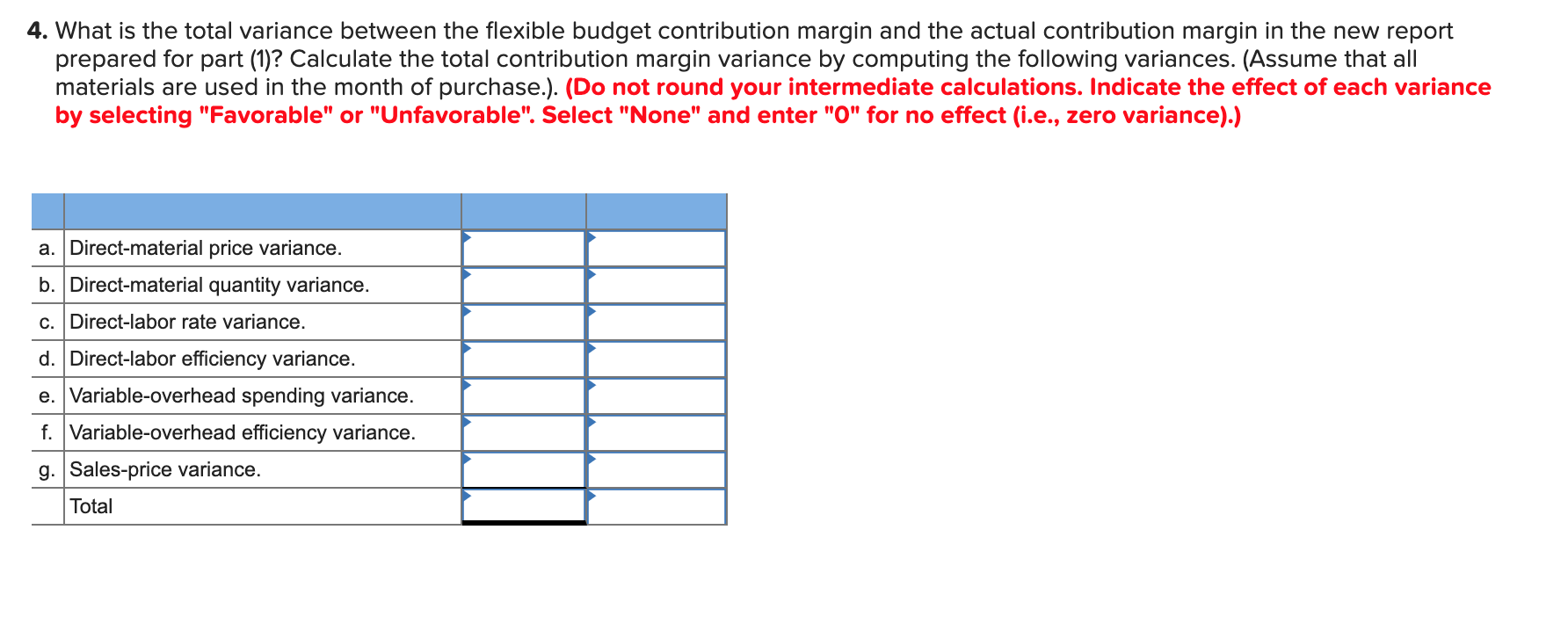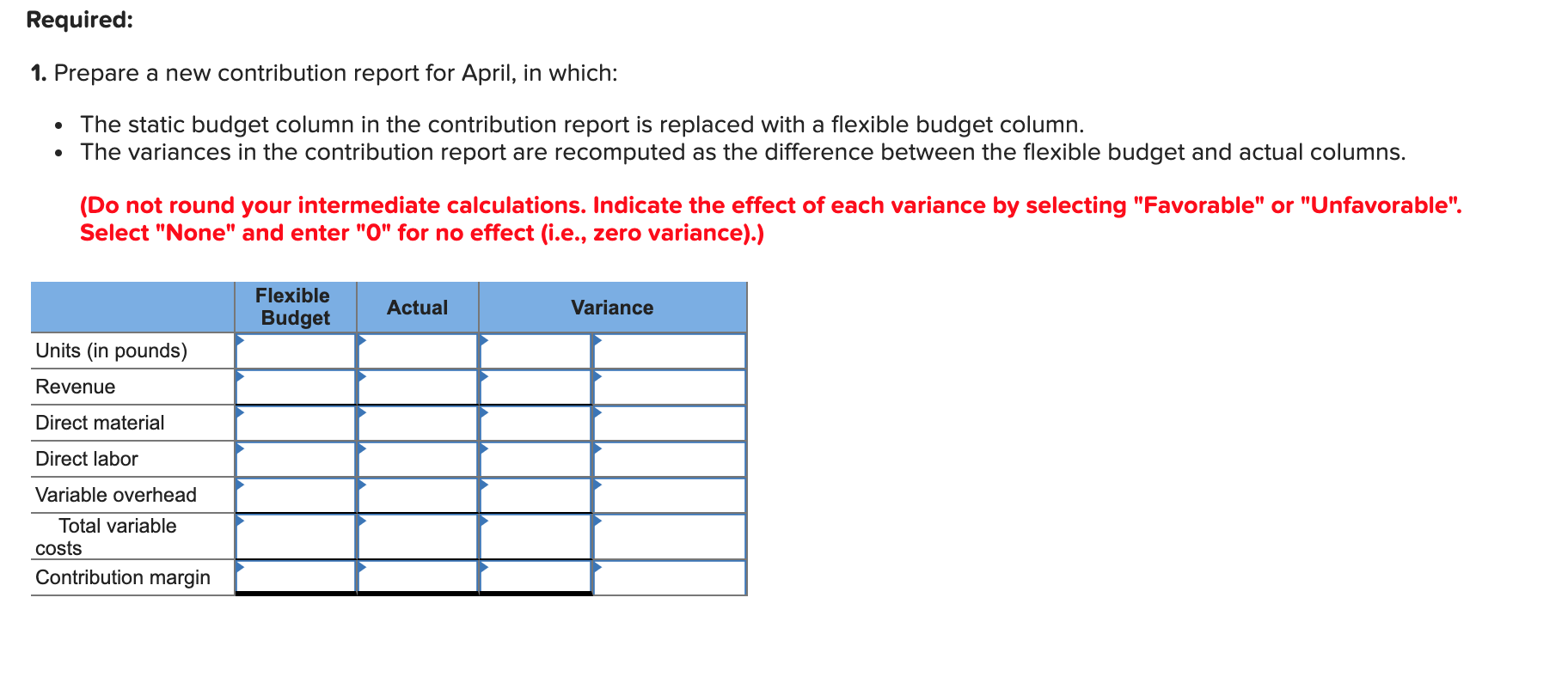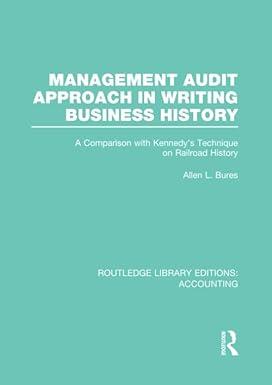Question
Aunt Mollys Old Fashioned Cookies bakes cookies for retail stores. The companys best-selling cookie is chocolate nut supreme, which is marketed as a gourmet cookie
Aunt Mollys Old Fashioned Cookies bakes cookies for retail stores. The companys best-selling cookie is chocolate nut supreme, which is marketed as a gourmet cookie and regularly sells for $9.00 per pound. The standard cost per pound of chocolate nut supreme, based on Aunt Mollys normal monthly production of 220,000 pounds, is as follows:
| Cost Item | Quantity | Standard Unit Cost | Total Cost | |||||||
| Direct materials: | ||||||||||
| Cookie mix | 10 | oz. | $ | 0.04 | per oz. | $ | 0.40 | |||
| Milk chocolate | 5 | oz. | 0.17 | per oz. | 0.85 | |||||
| Almonds | 1 | oz. | 0.52 | per oz. | 0.52 | |||||
| $ | 1.77 | |||||||||
| Direct labor:* | ||||||||||
| Mixing | 1 | min. | 14.40 | per hr. | $ | 0.24 | ||||
| Baking | 2 | min. | 18.00 | per hr. | 0.60 | |||||
| $ | 0.84 | |||||||||
| Variable overhead | 3 | min. | 32.40 | per direct-labor hr. | $ | 1.62 | ||||
| Total standard cost per pound | $ | 4.23 | ||||||||
*Direct-labor rates include employee benefits.
Applied on the basis of direct-labor hours.
Aunt Mollys management accountant, Karen Blair, prepares monthly budget reports based on these standard costs. Aprils contribution report, which compares budgeted and actual performance, is shown in the following schedule.
| Contribution Report for April | |||||||||
| Static Budget | Actual | Variance | |||||||
| Units (in pounds) | 220,000 | 245,000 | 25,000 | F | |||||
| Revenue | $ | 1,980,000 | $ | 2,180,500 | $ | 200,500 | F | ||
| Direct material | $ | 389,400 | $ | 555,200 | $ | 165,800 | U | ||
| Direct labor | 184,800 | 189,480 | 4,680 | U | |||||
| Variable overhead | 356,400 | 460,021 | 103,621 | U | |||||
| Total variable costs | $ | 930,600 | $ | 1,204,701 | $ | 274,101 | U | ||
| Contribution margin | $ | 1,049,400 | $ | 975,799 | $ | 73,601 | U | ||
Justine Madison, president of the company, is disappointed with the results. Despite a sizable increase in the number of cookies sold, the products expected contribution to the overall profitability of the firm decreased. Madison has asked Blair to identify the reason why the contribution margin decreased. Blair has gathered the following information to help in her analysis of the decrease.
| Usage Report for April | |||||||
| Cost Item | Quantity | Actual Cost | |||||
| Direct materials: | |||||||
| Cookie mix | 2,525,000 | oz. | $ | 101,000 | |||
| Milk chocolate | 1,450,000 | oz. | 319,000 | ||||
| Almonds | 260,000 | oz. | 135,200 | ||||
| Direct labor: | |||||||
| Mixing | 245,000 | min. | 58,800 | ||||
| Baking | 435,600 | min. | 130,680 | ||||
| Variable overhead | 460,021 | ||||||
| Total variable costs | $ | 1,204,701 | |||||
2.  What is the total contribution margin in the flexible budget column of the new report prepared for part (1)? What is the total contribution margin in the flexible budget column of the new report prepared for part (1)?  | |||||||
Step by Step Solution
There are 3 Steps involved in it
Step: 1

Get Instant Access to Expert-Tailored Solutions
See step-by-step solutions with expert insights and AI powered tools for academic success
Step: 2

Step: 3

Ace Your Homework with AI
Get the answers you need in no time with our AI-driven, step-by-step assistance
Get Started


